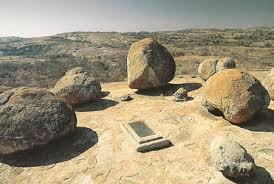THE UNGA FISHING METHOD NUMBER TWO - KUSEBESHA
Of the commercial fishing methods,
ukusebesha is one of the most prominent. Ukusebesha simply means setting your
nets and wait by. You normally wait near the nets such that after many fish have
gilled, you remove it and set your nets again. The process can be repeated as
many times as possible, depending on the type of fish and time of the day.
The most talked about type of
ukusebesha method by most Researchers is that done in the evening and early in
the morning concerning nocturnal Mormyridae kind of fish such as Marcusenius
macrolepitodus (Mintensa) and Petrocephalus simus (Cise). What
they call Ukusakila lupata (Ichikawa 1985 and Ichiro 1987) where you
find a school of impata, set your net and drive them to it during the
day is also termed as ukusebesha impata in Lunga.
To catch mintesa by this
method, we first of all identify their hide-out which is almost always
underneath a floating island (lufunsu) otherwise known as mukoma. They will take cover in here during the day
but will come out in the evening between 18:00 and 20:00 hours to forage. You
may sometimes spot them during the day or hear them splash water during the
evening. We therefore set our nets
around mukoma in anticipation of their movement.
We employ 1.5 inches mesh gillnets
fitted with floaters and sinkers. The
distance between nets may be three to four meters. The nets can be as long as
100 yards and 26 meshes wide. We will then
wait by the nets with vigilance.
Between 21:00 hours and mid-night,
it’s time to remove the fish from the nets. Depending on how much fish is
gilled, we may undo the nets, untangle the fish and re-arrange the nets for the
second round. Mintesa are known for struggling hard to come out of the
net so much so that they complicate their tangle. As a result, it takes a lot
of time and experience to untangle them and get the nets ready for the next
dragnet.
The survivors of our initial set up
will be returning to mukoma around 03:00 to 06:00 hours. We, therefore,
re-set our nets before this time to maximize the catch for the morning round.
Usually, we will be done by 02:30 hours and keep vigil over the nets. The same
way of setting nets in layers, one after the other, is used. Mintesa moves
in large schools such that when they gill in the first net, due to their
combined weight, the nets will sink to the bottom leaving others in the series
open. And so, the cycle will continue until all the nets are full. By 07:00 hours
in the morning, we will be back at the fishing camp preparing the fish for
drying. We either smoke or sun-dry them, depending on the circumstances and
fish traders’ preferences at the time.
There are other reasons for keeping
watch over the nets. Firstly, our camps may be far from mukoma which
might make it imprudent to be going back and forth. Secondly, immediately we
discern than there is no more inward or outward movement of fish, or enough has
gilled, we need to start untangling it. Again, within mukoma, there
could be fish eating predators that are always looking for some easy catch from
the nets which, if left unhindered, will damage our nets. We need to scare and
keep them away.
It’s not just mintesa that
is caught through kusebesha. Cise,
latin or scientific name stated earlier, is also caught the same
way. The only difference is the net’s size of mesh. Cise is smaller than
Mintesa and so we use 0.5 inches (1.3cm) mesh.
As you can see, Kusebesha method has
additional motives, though the primary one is following the movement of the
kind of fish we are interested in.
Please do not ask me how much
bodily sensation induced by mosquito bites we have to endure with this method.
It’s immensely painful! This is translated into the higher price you pay for Mintesa
than other small fish species.
We also do ukusebesha if we
want to catch red-breasted tilapia, Mpende, and related breams during the day
from their nests where they create burrows (imilindi) during their
spawning period. These will not be in schools like Mintesa and Cise but
are usually in pairs. When we see several nests that Mpende create by clearing
grass and other aquatic vegetation around, in order to make burrows where they
lay their eggs, we set our nets around them. Usually, we will use Kachala and
Kusakila as explained in Mukombo
method. Normally, you cannot have as much catch here as in Mintesa and
Cise. This type of fish caught this way, is usually for our own consumption
due to their huge size and taste.
That’s it for this method for now!
Until I come back with Amalalikisha
and Amapiila methods. Remember to
leave your comments and subscribe by email to receive each post into your inbox
by filling the space provided.
_______________
 SoundCloud
SoundCloud




Comments